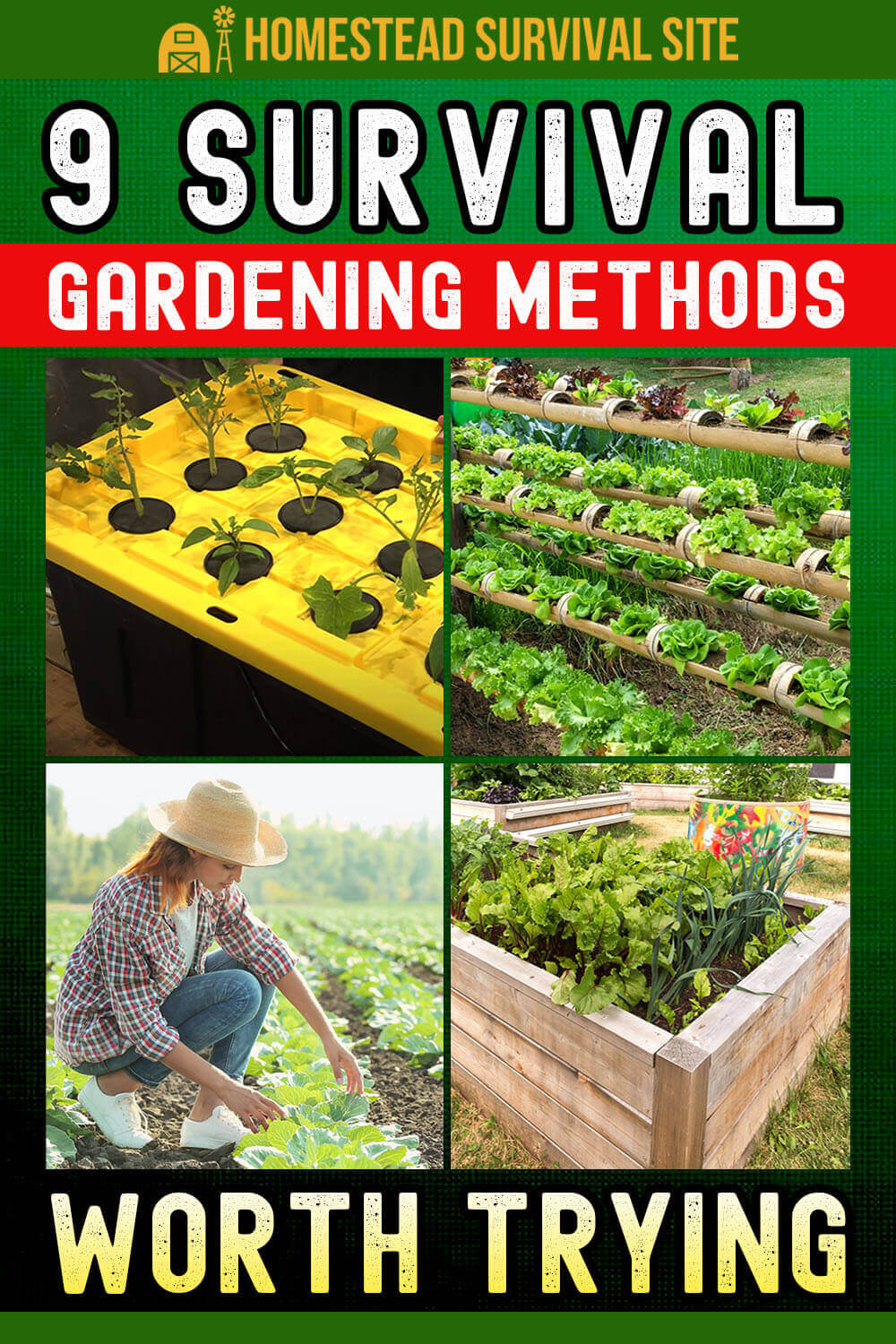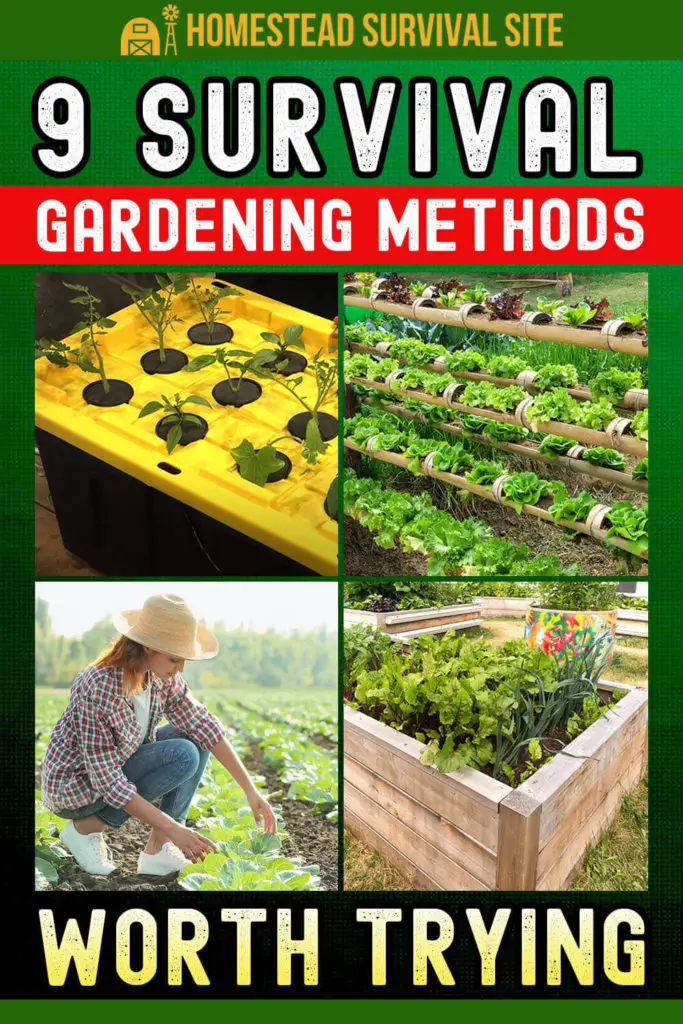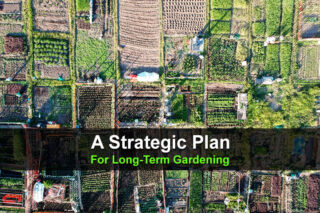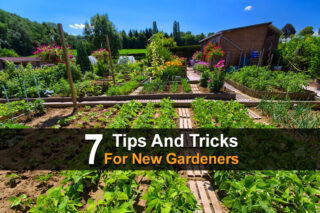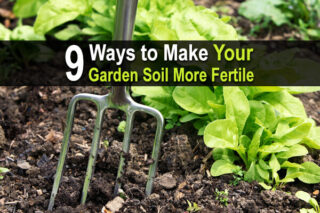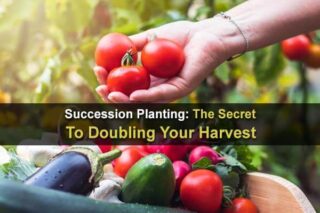Estimated reading time: 9 minutes
You can plant a survival garden no matter where you live, even if you have a tiny backyard. Sure, having a big yard makes it easier, but there are many survival gardening methods that allow you to grow lots of food in small spaces.
Deciding which method to try depends on how much space you have and how long your growing season is. Here are some points to ponder before making that decision.
- Know what USDA Hardiness Zone you live in AND what is traditionally and successfully grown there. While it is entirely feasible to grow out of the region, focus first on outdoor plants that thrive in your native environment.
- Decide what crops you want to grow based upon their nutritional value, family taste preference, and their ability to be preserved by canning, dehydrating, etc.
- Determine what type of soil you have. Do a simple soil test or get help from your local water and soil conservation office or 4-H extension office.
- If gardening exclusively outdoors, discover where all of the full sun, partial sun, and shady spots are to determine what can be grown in various parts of your yard.
- Start a compost pile if you have not done so already. Even if you have little to no outdoor space, composting your own quality soil should be a vital part of your survival gardening plan. Kitchen compost bins can help you at least generate enough nutrient-rich soil to get your seeds started each spring.
Want to save this post for later? Click Here to Pin It On Pinterest!
Top 9 Survival Gardening Methods
1. Row Crops Garden
Planting garden crops in rows is the most conventional form of gardening – especially in the United States. The seeds are planted in nice neat and straight rows typically composed of all the same types of seeds.
This type of gardening is best used when putting in large gardens that will be tilled and worked with common farm machinery like tractors or the old-fashioned way with a team of draft animals. Hand tools can also be used to break up and work the ground if necessary, but working the growing plot will involve a lot more manual labor and many more work hours to plant and bring in the harvest.
The primary advantage of the row method comes with planting and tending to a large amount of crops using tractor machinery or a push tiller – or even a wheel hoe. These tools are used to kill weeds in between the crops and rows quickly and make irrigating crops during times of no or low rain a speedier proposition.
The disadvantage to row gardening is the amount of work that has to be done to get a conventional garden like this to flourish if you do not have the farm equipment necessary to work it – or the tractor or tiller break down during the growing season and you are reduced to tending to the crops with only hand tools.
2. In Ground Bed Gardening
An in-ground row or bed garden is another fairly conventional form of raising crops. Folks who are working with a smaller plot of land to garden or merely want to take advantage of all feasible growing space on their property, often opt to cultivate some raised beds of vegetable plants.
When planting an in-ground bed garden, plants are typically placed closer together than in a row garden – unless you are cultivating lavender or similar plants that require extensive airflow to prevent over exposure to humidity and wilting.
With in-ground bed gardens, you do not have to use large farm machinery or spend copious amounts of manual labor hours to till the growing plot. A typical in-ground bed garden is created to be about four feet wide by eight feet long. Unless you choose to fill the in-ground beds with freshly applied compost or bags of potting soil, the soil will still need to be loosened to accept the seeds or plants and to drain well.
A walk behind push rototiller can work the soil in an in-ground bed survival garden in a very short amount of time. While this does involve some manual labor, the amount of time it will take to work through three or four raised beds is minimal when compared to working a large row garden.
3. Raised Bed Garden
You can buy or make raised bed garden frames that are filled with compost or purchased potting soil to negate the need to do any tilling work at all. To reduce the bending on your knees and back, you can build the raised bed on legs to create more of a planting table style garden that allows you to weed and pick from the plants that are growing at waist height instead of in a framed bed with a bottom that sits directly on the ground.
The depth of your raised bed will determine what crops can be grown inside of the frame. If you want crops that have deep roots, you will either need to build a raised bed deep enough to accommodate the roots or opt for an in-ground bed to successfully cultivate vegetable and fruit plants that require more under-the-surface room to thrive.
4. Hugelkultur Garden
Fans of no-till gardening often prefer using a raised bed filled with rich compost or purchased potting soil to get their crops growing. The hugelkultur gardening method is a close cousin to a no till garden, and this method is also often used in raised garden beds. In a hugelkultur garden, organic matter rich in nutrients is simply layered onto logs to create a mound that plants can be planted in.
Over time, the wood in the logs will break down and infuse more nutrients into the soil while also helping to retain moisture – which is especially beneficial in a survival garden during times of low rain or drought.
5. Mound Gardening
Using the ancient mound growing method in your survival garden is perhaps the simplest and cheapest way to start growing your own groceries.
Gardening in a mound is the basis for the highly effective “Three Sisters” garden method Native Americans used to cultivate the nutrient-rich corn, beans, and squash crops. They would use potent organic matter (often fish pieces) buried at the base of the mound to create a natural fertilizer for their crops.
6. Container Pot Gardening
Growing plants in containers allows you to not only make use of any small space that gets good sun on your property, it also permits you to grow indoors AND make your survival garden portable. There is no tilling required at all with container pot gardening. You simply fill with compost or purchased potting soil and get your seeds or plants in the dirt and start them growing.
Container pot gardening allows you to grow non-native plants indoors when the weather is too cold for them outside and then once you harden them off over the course of a few days to a week (depending upon the plant) they can be relocated outdoors for natural sunlight.
If you have little space to garden outdoors, growing crops entirely indoors using container pots and perhaps a grow light depending upon the warmth and natural light inside of your home, you can still grow a lot of your own survival food to preserve.
The size of the pot will dictate what you can grow, but it is entirely possible to grow large plants such as tomatoes, green beans, rice, peppers, and broccoli in a container pot. In fact, you can even grow corn in a container pot.
Being able to pack up your plants and take them with you in a bugout situation or simply move them indoors to protect them from the prying eyes of the unprepared can also help keep your survival garden crops secure during a SHTF situation.
Although not portable, you could even use old tires to create a container garden. Just a single tire or two piled on top of each other to create more depth, fill them with good dirt and start growing your crops. Growing potatoes in barrels or plastic totes will enable you to cultivate these traditional garden crops into a no-till quickie garden, as well.
7. Vertical Garden
A vertical garden is very similar to a container pot garden. Using hanging planters attached to shepherd’s hooks or a patio deck rail are quick and simple forms or vertical gardening that are perfect for either a space conscious gardener or one with ample space that wants to make the most of every available inch they own to grow their survival food.
You can also purchase or make larger vertical gardening containers consisting of cloth pockets or PVC pipes that can be hung on either an interior or exterior wall or attached to a frame to grow smaller and more lightweight crops such as lettuce, garlic, onions, carrots, turnips, and many types of healing herbs.
8. Hydroponics Garden
Using the hydroponics method to grow a survival garden means you are planting directly in water and not using any dirt at all to cultivate the plants. The oxygen and nutrients are infused to the water to facilitate plant growth. This method of gardening can be completed in a covert manner because with a proper light setup, you can even grow plants in a closet!
Powering a hydroponics system using solar energy has become extremely popular with off the grid homesteaders and preppers. It does not take a significant amount of energy to operate a small hydroponics pump to keep your water clean and your plants healthy.
9. Food Forest
A food forest is an ancient gardening method that will not only help you disguise your survival garden but also cut down on weeding and permit the plants to be excellent companions for one another and spark enhance health and growth throughout the growing season. Typically, a permaculture food forest intermingles perennial trees and fruit bushes, and plants into a guild growing style set up, not traditional garden rows.
The permaculture food forest is the type of survival garden my prepping mentor Rick uses to grow all the food he and his wife need on less than an acre.
Like this post? Don't Forget to Pin It On Pinterest!

